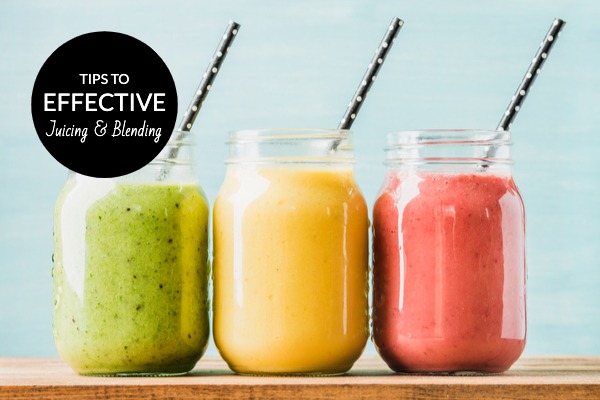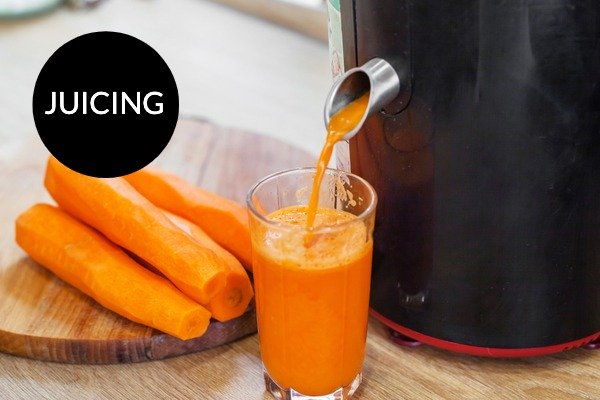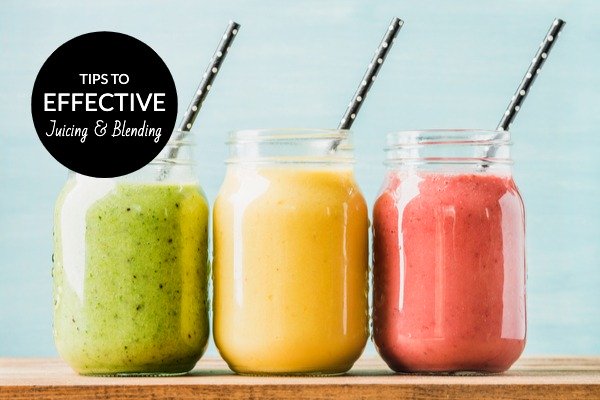
Contrary to what many people might think, there’s definitely a difference between throwing a few fruits and veggies in a blender versus a juicer. While both of these options offer health benefits, the end products are not the same. Let’s dig deeper to see just what the big difference is between the two.
Juicing

Juicing involves extracting water and nutrients from fruits and veggies, and eliminating any indigestible fiber, such as the skins. Your digestive system is able to break down the food a lot easier and faster without all that extra fiber, and therefore absorb the nutrients. All the nutrients from the food are also more readily available to all your muscles and organs in larger quantities compared to eating whole produce.
Fiber slows down the digestive process, and releases nutrients slowly and steadily into the bloodstream. On the other hand, consuming a juiced cocktail helps the body take up these nutrients a lot faster. Juicing also helps add a variety of phytochemicals in your diet, since each vegetable and fruit added will offer their own specific benefits.
Many people have impaired digestion because of poor food choices that have been made over the years. This inhibits the body’s ability to sufficiently absorb all the nutrients from the vegetable. Juicing basically starts the digestion process for you so that your body can absorb most of the nutrients rather than expelling them.
Many people also like juicing because it tastes a lot better than eating certain vegetables whole. Not everyone can stomach kale or cabbage; with juicing, you can still get all the nutrition from otherwise bad-tasting vegetables in a tastier format.
It’s worth noting that you might likely feel hungry soon after drinking your juiced concoction. That’s because there’s no fiber in the mix to keep you feeling fuller for longer. Without filling fiber, you’ll likely be wanting to have another snack sooner rather than later.
You should also be careful with how much fruit you add to your drink. Since the juice is absorbed into the blood very quickly, juices that are predominantly filled with fruit would cause a quick hike in blood sugar. Unstable levels of blood sugar have been known to cause loss of energy, mood swings, and even memory issues. Make sure you balance out the fruits and vegetables that you add.
Blending

Blended smoothies are made with whole fruits or vegetables, including the skin. For this reason, blending retains the fiber from the produce.
However, blending breaks apart the fiber, making the fruits and veggies easier to digest. It also means that the nutrients are released into the bloodstream much more slowly, which helps avoid spikes in blood sugar levels.
Because of the presence of fiber, smoothies used with whole produce are more filling and keep you feeling satisfied for longer periods compared to juicing. But you won’t be able to get as many servings of fruits and vegetables in your smoothie because of the increase in volume.
Tips to Effective Juicing and Blending
Whether you choose to juice, blend, or both, there are certain rules you should follow to make the most of your drink.
Avoid mixing certain vegetables with fruit. Vegetables such as zucchini, broccoli, and carrots don’t mix well with fruit because of their high starch content. Starchy veggies like these are best eaten on their own because the types of enzymes used to digest them are different than the ones used for other foods. If you throw in starchy vegetables like these with fruit, fermentation will result, which will cause gas and bloating. Instead, focus on green leafy vegetables to combine with your fruit.
Drink your juice or smoothie within 12 hours. If you’re not planning on drinking your beverage right away, don’t bother making it yet. Leaving your drink in the fridge for an extended period of time will cause oxidation (breaking down) of the nutrients. If you made extra or aren’t quite ready to down the goodness, put it in an airtight container, filled to the top, place it in the fridge and get back to it as soon as possible.
Invest in good-quality equipment. Don’t skimp out on your juicer. Cheap equipment will be more likely to let in oxygen and heat, which will destroy all those vital nutrients. Sure, they’re more expensive, but they will help you extract a lot more of the good stuff out of your fruits and veggies, which is what you’re buying the machine for in the first place.
Instead of centrifugal or rough extraction juicers, cold-press or mastication juicers are more effective at squeezing out the juice through compression of the produce. Not only that, they’ll last longer.
The advice is the same for blenders. Get yourself a high-quality blender that will be gentler on your fruits and vegetables and won’t heat the enzymes as the fiber is being broken down.
Juicing and blending are certainly different, but they each have their own benefits. Blended smoothies are great for a filling, healthy meal, while juicing offers the benefit of getting your quick fix of fruits and vegetables in one convenient, nutrient-packed drink.
